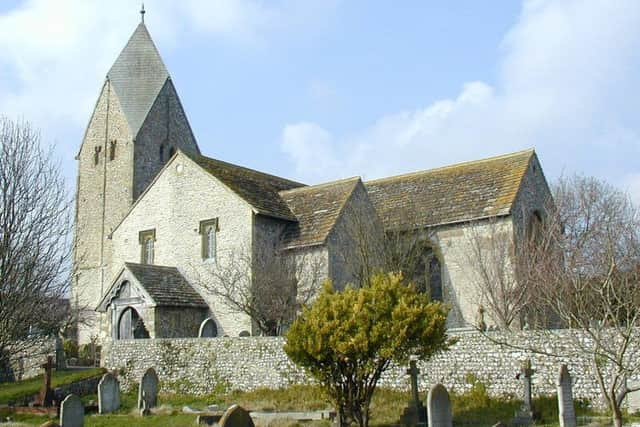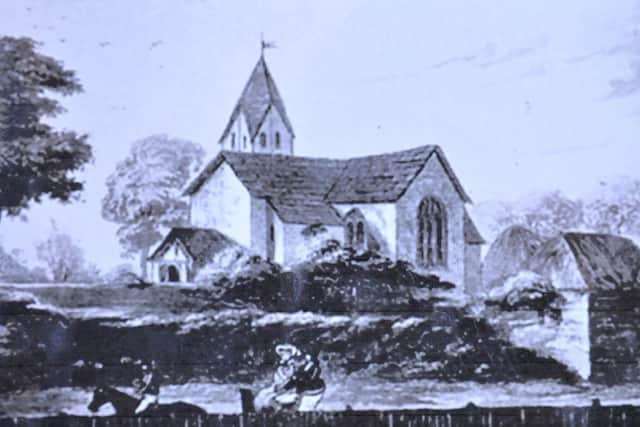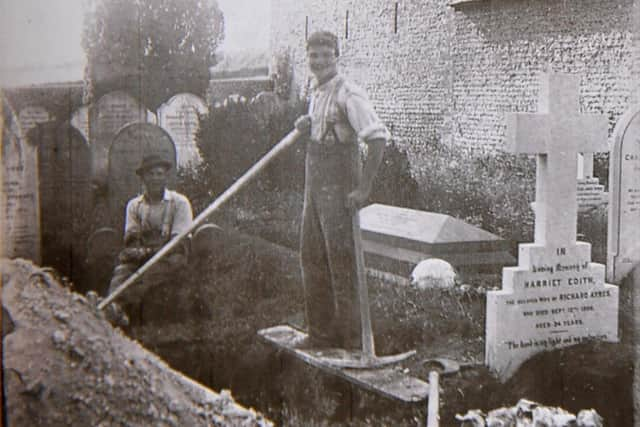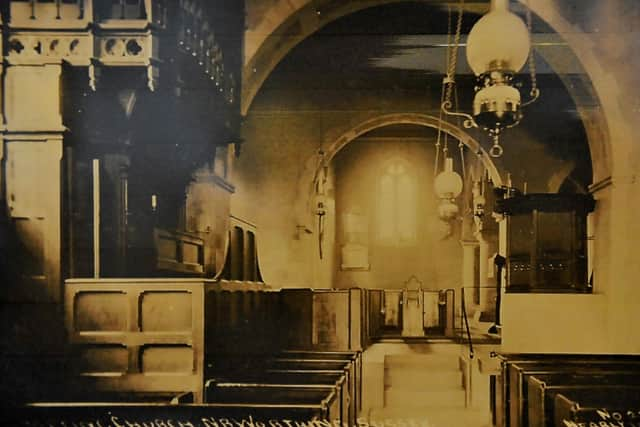Sompting parish church: History of one of the best-preserved Anglo Saxon churches in England explored in photography exhibition
and live on Freeview channel 276
Eileen Colwell, secretary of Lancing and Sompting Pastfinders local history group, put together a fascinating display of information, images and maps. She has lived in Sompting since 1967 and has been researching local history for years.
Eileen said: “It was a huge amount of work, the biggest exhibition I have ever done. Some of it has been going on for such a long time, like the research into the lych gate. It was all generally interesting because it wraps into the life of the village.”
Advertisement
Hide AdAdvertisement
Hide AdThe lych gate at St Mary’s Church is a ‘Monument to the Glorious Dead’, built as a memorial following the First World War. A dangerous tree had to be removed from the churchyard in April 1918 and the sale of the wood raised £6 for a war memorial. Permission to built the lych gate was granted on May 19, 1920. It was designed by George Weller from Sompting and made of Sussex oak, to show the decorative grain, with a roof covered in oak shingles to harmonise with the Saxon tower.


One historical mystery yet to be resolved is the location of a mediaeval hospital named St Mary and St Anthony in the hamlet of Cokeham.
Eileen said: “It was a hospital in terms of hospitality. They describe it minutely but there are only names, no pictures, so we don’t know where it was.”
There was also a chapel dedicated to St Peter, part of Cokeham Manor, which was owned by the de Bernhus family and passed to the Knights Templar along with Sompting Church around 1154. It is not known when the Chapel of St Peter was finally ruinous.
Advertisement
Hide AdAdvertisement
Hide AdHowever, in 1830, Edmund Cartwright made reference to the existence of ‘a small piece of wall on the east side of the chapel field which marks the site of the chapel but not sufficient to denote its dimensions or the style of its architecture’.


Another thing that particularly intrigues Eileen is the unknown burials at the church. A picture in the archive shows grave diggers working south of Grave 41, where Harriet Edith Ayres is buried. In 2003, when monumental inscriptions were recorded, no headstone was in place. Eileen would love to know who the grave diggers were and who was buried in the grave.
More unknown burials came to light during work in the Templars Chapel. In June 1974, the Worthing Herald published a report concerning a dig at St Mary’s Sompting before restoration works could begin.
The article referred to the removal of the choir stalls, making the Chancel much wider, and the installation of two memorial stalls. All the flooring was to be removed to be replaced by light grey stone, with the steps being widened.
Advertisement
Hide AdAdvertisement
Hide AdThe Rev R.D. Wisken told the Herald the works would open up the Chancel and relieve congestion.


A dig was conducted by Worthing archaeologist Con Ainsworth and five complete pre-12th century skeletons, including a mother and young child, were discovered only three feet below the floor of the chapel.
Mr Ainsworth said the chapel had been built in the 12th century at a lower level than the earlier nave and was approached down three steps, which accounted for the remains being found so near the surface.
Sompting Peverel, in Church Lane, was once the vicarage. When the Rev W. Brownswood was vicar, he wrote poetry and it is said that Edward Trelawny, a close friend of Shelley and Byron, was a regular visitor.
Advertisement
Hide AdAdvertisement
Hide AdThe present house was built and paid for by Edward Barker around 1826, when the Rev Thomas Poole Hooper was vicar, and extended in 1841.


The Rev John Blake Honnywill was vicar of Sompting from 1863 to 1883 and his memorial can be found in the South Transept.
He had a protracted correspondence with the Charity Commission and is the first named applicant on an eight-page document dated October 29, 1872, relating to the charity The National School in Sompting, which had been created by Deed of Grant on June 14, 1848. Miss Mary Honnywill, the vicar’s daughter, became a school governor.
The Rev R.E. Williams, who was vicar from 1884 to 1906, started an historic era for Sompting and education when he advertised for a new head teacher and assistant in 1897. Miss Harriet Johnson and her sister Emily were both interviewed and offered jobs, with Harriet as the new headteacher and Emily in charge of the infants.
Advertisement
Hide AdAdvertisement
Hide AdHarriet married George Weller in Sompting Church in 1910 and was given away by the bridegroom’s father, William Weller. Due to regulations at the time, she had to leave the school to start married life in Wenham Cottages.